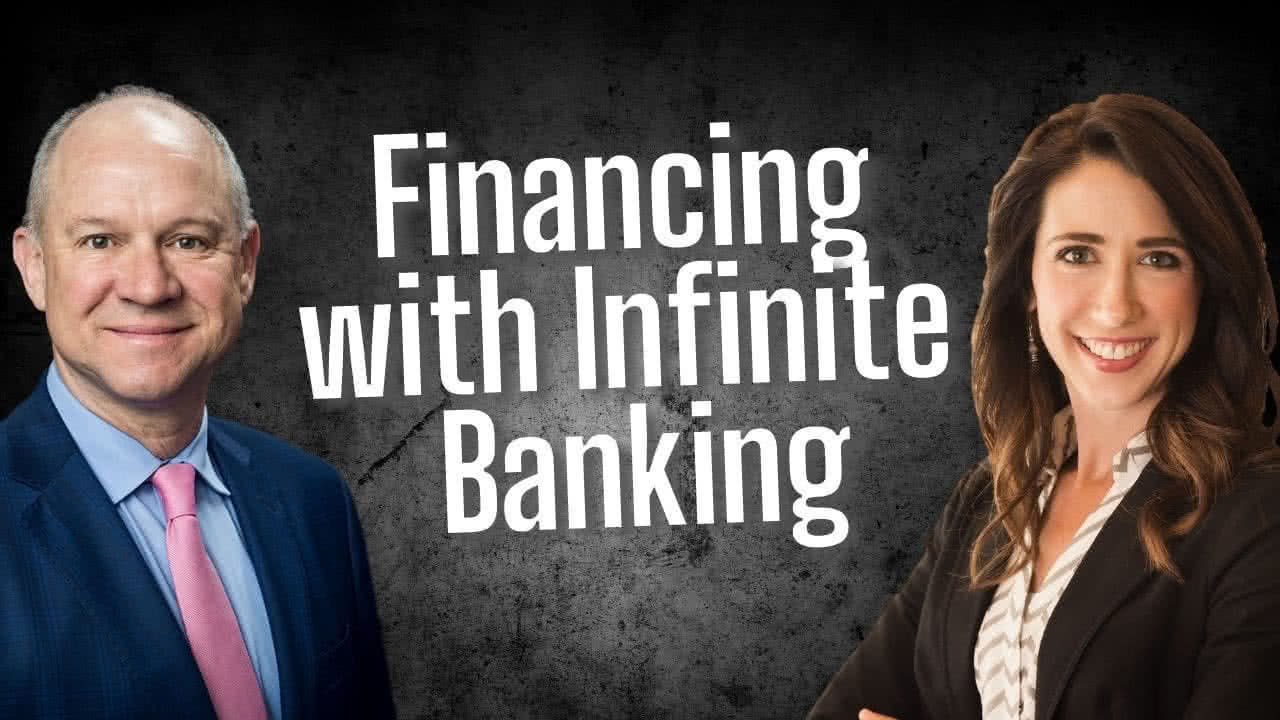All Categories
Featured
Table of Contents
Okay, to be reasonable you're actually "banking with an insurance coverage business" as opposed to "financial on yourself", however that concept is not as very easy to sell. Why the term "unlimited" financial? The concept is to have your money operating in numerous locations simultaneously, as opposed to in a single place. It's a little bit like the idea of buying a residence with cash money, after that obtaining against your house and putting the money to operate in another financial investment.
Some individuals like to chat concerning the "rate of cash", which basically suggests the same thing. That does not suggest there is nothing beneficial to this principle once you obtain past the advertising and marketing.
The whole life insurance policy sector is tormented by extremely expensive insurance policy, enormous payments, dubious sales methods, reduced prices of return, and inadequately informed customers and salespeople. If you want to "Financial institution on Yourself", you're going to have to wade right into this industry and really get entire life insurance coverage. There is no alternative.
The assurances fundamental in this product are important to its feature. You can borrow against most kinds of money worth life insurance policy, yet you should not "financial institution" with them. As you buy an entire life insurance policy policy to "financial institution" with, bear in mind that this is an entirely different area of your economic strategy from the life insurance policy section.
Buy a huge fat term life insurance policy policy to do that. As you will certainly see below, your "Infinite Financial" policy really is not going to reliably give this essential financial function. An additional trouble with the fact that IB/BOY/LEAP depends, at its core, on an entire life policy is that it can make purchasing a policy bothersome for much of those interested in doing so.
Infinite Banking Concept Calculator
Harmful leisure activities such as diving, rock climbing, sky diving, or flying also do not blend well with life insurance coverage items. The IB/BOY/LEAP advocates (salesmen?) have a workaround for youbuy the plan on a person else! That may exercise great, because the factor of the plan is not the death benefit, however keep in mind that purchasing a policy on small kids is much more costly than it needs to be since they are usually underwritten at a "standard" rate as opposed to a favored one.

Many plans are structured to do one of 2 things. The majority of commonly, policies are structured to take full advantage of the payment to the agent offering it. Negative? Yes. But it's the fact. The payment on an entire life insurance plan is 50-110% of the initial year's costs. Occasionally policies are structured to make the most of the survivor benefit for the premiums paid.
With an IB/BOY/LEAP plan, your goal is not to optimize the survivor benefit per buck in costs paid. Your objective is to make the most of the cash money value per buck in premium paid. The rate of return on the policy is extremely crucial. Among the best ways to optimize that element is to obtain as much money as possible into the plan.
The best method to boost the rate of return of a plan is to have a reasonably little "base policy", and then put more cash money right into it with "paid-up enhancements". As opposed to asking "How little can I place in to get a certain death benefit?" the concern comes to be "Exactly how a lot can I legally placed right into the policy?" With even more money in the policy, there is even more cash money value left after the costs of the fatality benefit are paid.
A fringe benefit of a paid-up addition over a routine costs is that the commission price is reduced (like 3-4% instead of 50-110%) on paid-up additions than the base policy. The less you pay in commission, the greater your rate of return. The price of return on your cash value is still mosting likely to be adverse for some time, like all money worth insurance coverage.
It is not interest-free. It might cost as much as 8%. Many insurance business only supply "direct acknowledgment" financings. With a direct recognition car loan, if you obtain out $50K, the dividend price used to the cash value yearly just puts on the $150K left in the plan.
Infinite Banking Definition
With a non-direct acknowledgment lending, the company still pays the same returns, whether you have "obtained the money out" (technically versus) the plan or not. Crazy? That understands?
The companies do not have a resource of magic complimentary money, so what they give up one area in the policy must be drawn from one more location. If it is taken from an attribute you care much less around and put right into a feature you care much more about, that is an excellent point for you.
There is another important feature, usually called "laundry lendings". While it is fantastic to still have actually dividends paid on money you have gotten of the plan, you still need to pay rate of interest on that lending. If the dividend price is 4% and the funding is charging 8%, you're not precisely coming out ahead.
With a clean loan, your lending rates of interest is the very same as the returns price on the plan. So while you are paying 5% rate of interest on the lending, that rate of interest is totally offset by the 5% dividend on the financing. In that regard, it acts simply like you took out the cash from a financial institution account.

5%-5% = 0%-0%. Without all three of these factors, this plan just is not going to function very well for IB/BOY/LEAP. Nearly all of them stand to profit from you buying into this concept.
Actually, there are many insurance policy agents chatting concerning IB/BOY/LEAP as an attribute of whole life that are not in fact offering plans with the necessary functions to do it! The trouble is that those that understand the idea best have a massive dispute of interest and normally pump up the advantages of the idea (and the underlying plan).
Infinite Banking Examples
You need to contrast loaning against your plan to taking out cash from your cost savings account. Go back to the beginning. When you have absolutely nothing. No cash in the financial institution. No money in financial investments. No cash in cash worth life insurance coverage. You are faced with a selection. You can put the cash in the bank, you can spend it, or you can get an IB/BOY/LEAP plan.
It grows as the account pays passion. You pay taxes on the passion yearly. When it comes time to purchase the boat, you take out the cash and buy the boat. You can conserve some more cash and put it back in the financial account to start to earn interest once more.
It expands for many years with funding gains, dividends, rents, etc. A few of that earnings is exhausted as you go along. When it comes time to get the boat, you sell the financial investment and pay tax obligations on your long-term funding gains. Then you can save some more cash and purchase some more financial investments.
The cash money value not made use of to pay for insurance and compensations grows over the years at the reward rate without tax drag. It begins with unfavorable returns, yet hopefully by year 5 approximately has recovered cost and is expanding at the dividend price. When you most likely to purchase the watercraft, you borrow versus the policy tax-free.
How Can You Be Your Own Bank
As you pay it back, the cash you repaid starts expanding again at the dividend rate. Those all job quite similarly and you can contrast the after-tax rates of return. The fourth alternative, nevertheless, functions extremely in different ways. You do not save any type of money neither get any kind of financial investment for years.
They run your debt and offer you a car loan. You pay interest on the obtained money to the financial institution up until the funding is repaid. When it is settled, you have an almost worthless watercraft and no cash. As you can see, that is not anything like the first 3 options.
Table of Contents
Latest Posts
Bank On Yourself Review Feedback
Nelson Nash Institute
Infinite Banking Solution
More
Latest Posts
Bank On Yourself Review Feedback
Nelson Nash Institute
Infinite Banking Solution